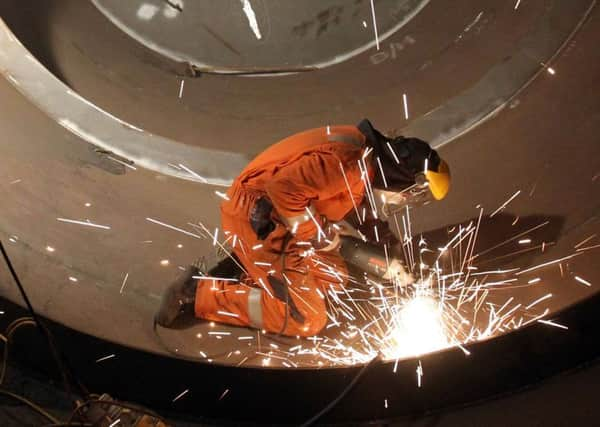Prospect of rise in interest rates as UK growth bounces back


Gross domestic product increased by 0.7 per cent, meaning GDP per head - a measure which takes into account that the nation’s wealth is shared by an expanding population - has now caught up with pre-crisis levels at the start of 2008.
The figures, published by the Office for National Statistics, are in line with expectations and the confirmation that growth is now back on track could add to speculation about the timing of an interest rate increase being brought forward.
Advertisement
Hide AdAdvertisement
Hide AdChancellor George Osborne wrote on Twitter: “GDP growth 0.7 per cent. Shows Britain motoring ahead with economy producing as much per head as ever before. We must stay on road we’ve set out on.”
In Yorkshire, business leaders welcomed the figures, which the West and North Yorkshire Chamber of Commerce said mirrored local growth.
Mark Goldstone, the chamber’s head of business representation and policy, said: “The latest GDP results are largely in keeping with our own quarterly economic survey released last week which showed continuing growth in the service sector, Leeds being a particular hot spot with companies reporting an 11 year peak in business confidence.
“Elsewhere we reported slowing across the manufacturing and construction sectors with manufacturing exporters particularly challenged by strengthening of sterling versus other major currencies and a general slowing in the pace of growth in world trade.”
Advertisement
Hide AdAdvertisement
Hide AdThe figures come in the wake of comments by Bank of England governor Mark Carney that have heightened speculation about the timing of an interest rate hike. Rates have been held at 0.5 per cent for more than six years, but the economic recovery and a pick-up in wage growth mean an increase is expected in the coming months.
The Bank’s Monetary Policy Committee must set interest rates to try to keep inflation around a two per cent target, a level which could arguably be threatened over the next couple of years by rising pay.
But Mr Goldstone urged caution about ‘raising rates this side of Christmas’.
The latest figures show the return to form for the dominant services sector, which has led the economy out of recession, helped the UK improve on a disappointing start to the year when GDP increased by just 0.4 per cent.
Advertisement
Hide AdAdvertisement
Hide AdThe sector, representing more than three-quarters of economic output, contributed 0.5 per cent out of the 0.7 per cent growth figure. And tax breaks for the beleaguered North Sea oil and gas industry meanwhile helped the production sector to its strongest performance for four and a half years. But Britain’s factories - which have been hit by the strength of the pound weighing on exports - struggled. Manufacturing shrank by 0.3 per cent, the worst performance since the start of 2013.
And the construction industry was also flat, continuing its sluggish run since the end of last year.
GDP is now 5.2 per cent ahead of its level in the first quarter of 2008, prior to the recession which saw the economy shrink by as much as 6 per cent. The services sector is 9.2 per cent ahead, but production is still lagging behind by 8.9 per cent and manufacturing by 4.9 per cent. Construction is 3.2 per cent behind where it was seven years ago.